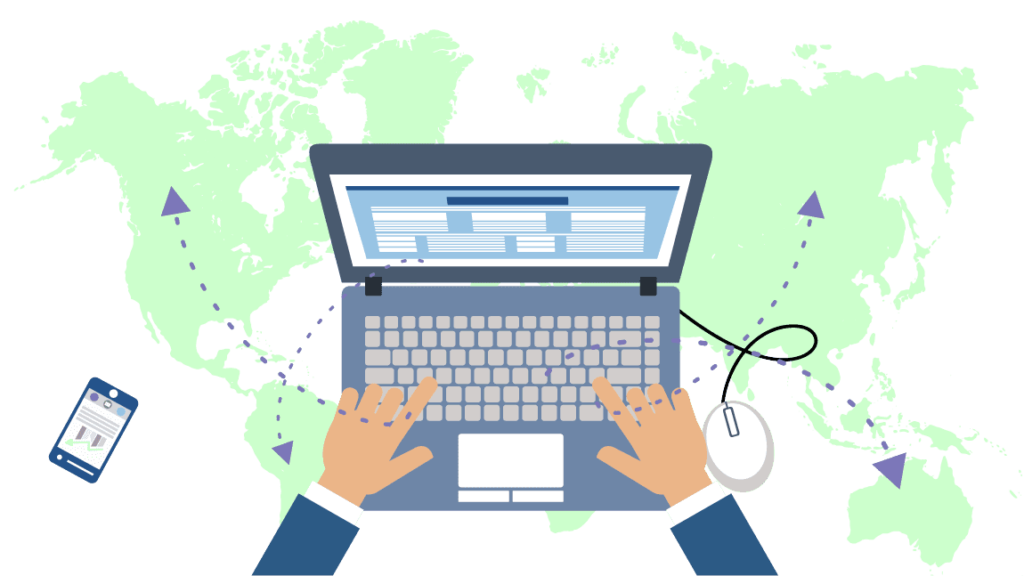Introduction
In today’s globalized world, the localization and translation services industry has seen significant growth in recent years, thanks to advancements in technology. Communication with people from different cultures and languages has become more critical than ever before. For businesses that want to reach a global audience, localizing and translating their content into different languages is essential.
However, it is important to note that machine translation and localization cannot replace human translation entirely. While technology has made translation and localization faster and more efficient, there are still nuances and cultural references that require human expertise to accurately convey the intended message. Therefore, a combination of machines and human expertise is necessary for successful translation and localization in today’s globalized world.
In this blog post, we will discuss the role of technology and how it has transformed the industry.
The Evolution of Localization and Translation Services

Localization and translation services have been around for centuries. Humans have been translating languages since the dawn of civilization, but it wasn’t until the invention of the printing press in the 15th century that translation became a commercial enterprise. For centuries, translation was done manually by linguists, who had to possess a deep understanding of both the source and target languages.
(Read also; The Importance of Localization in Today’s Global Market)
However, the process of translating and localizing content has evolved significantly over time. Traditionally, translation and localization were done manually by human translators. The process was time-consuming and expensive, and often resulted in errors or inconsistencies in translations.
With the advent of the computer age, machine translation (MT) was born. The first MT program was the “Georgetown-IBM experiment” in 1954, which translated 60 Russian sentences into English. However, MT remained largely unreliable until the 1990s, when statistical machine translation (SMT) was developed.
Fast-forward to today, and we have neural machine translation (NMT), which uses artificial intelligence (AI) to learn from vast amounts of data and produce highly accurate translations.
As technology advanced, the translation and localization industries also evolved. Today, it has revolutionized the way we translate and localize content.
How Technology is Changing the Face of Localization and Translation Services

The rise of machine learning and artificial intelligence has intensified the evolution of translation technology, enabling the development of advanced translation software and tools capable of handling increasingly complex translation tasks.
Technology is changing the way localization and translation are done by making translation processes faster, more precise, and more efficient. Now, businesses can have their website or software localized, their videos subtitled and dubbed, and even have their social media content translated in real time. And all thanks to technology, translation service providers offer faster turnaround times and higher-quality translations. With AI-powered NMT, translations can be done in real-time, making it easier for businesses to reach a global audience quickly.
However, it is important to note that technology should not replace the role of human translators entirely, as cultural nuances and context-specific language cannot always be accurately translated by machines. Instead, technology should be viewed as a tool to support
Translation Technology
Technology plays a critical role in modern localization and translation services. With the increasing demand for multilingual content, translation technology has become an essential tool for businesses, organizations, and individuals who want to communicate effectively with a global audience. Here are some ways technology supports localization and translation services:
- Translation Memory (TM): Translation Memory is a database that stores previously translated content, allowing translators to reuse translations for similar phrases or sentences. TM technology not only improves translation quality but also reduces turnaround time and cost.
- Machine Translation (MT): Machine translation refers to the use of software to translate text automatically. MT technology has advanced significantly in recent years, and it can be used to translate large volumes of content quickly and at a lower cost than human translation.
- Terminology Management: Terminology management involves creating and maintaining a database of approved terminology and using it consistently across all translations. Terminology management tools ensure that translations are consistent and accurate, which is particularly important for technical content.
- Localization Management System (LMS): A localization management system is a software platform that helps manage the localization process. It typically includes tools for project management, file management, quality assurance, and reporting.
- Translation Collaboration Platforms: Translation Collaboration Platforms allow multiple translators to work on the same project simultaneously, enabling real-time collaboration and reducing turnaround time while facilitating communication between translators, project managers, and clients, ensuring everyone is on the same page during the localization process
The Future of Translation and Localization Services: What’s Next?
As AI and machine learning continue to evolve, we can expect the industry to become even more accurate and efficient. In the future, we may even see the rise of real-time speech translation, making it possible for people speaking different languages to communicate with each other effortlessly.
However, it’s important to note that technology can never fully replace human translators. Language is a complex and nuanced aspect of human communication, and there are still certain situations where a human touch is necessary. Language is complex and nuanced, and there are some things that a machine just can’t translate.
Nonetheless, technology has undoubtedly revolutionized the translation and localization industry, making it easier for businesses to expand their reach and communicate with a global audience.
One potential benefit of AI and machine translation is their ability to process large volumes of content quickly and accurately, especially for businesses with global operations. However, it is important to work with experienced translators and localization experts to ensure their content is culturally appropriate and accurately reflects the nuances of different languages and regions.
Conclusion
Technology has transformed the localization and translation industry, making it faster, more accurate, and more cost-effective. The use of translation technology, such as translation memory, machine translation, and terminology management, has enabled translators to work more efficiently and produce high-quality translations. Localization management systems and translation collaboration platforms have streamlined the localization process, enabling real-time collaboration and communication among translators, project managers, and clients.
As the demand for multilingual content continues to grow, we can expect technology to play an even more critical role in enabling businesses to communicate effectively with a global audience. So, If you ever get lost in translation, let technology be your guide!